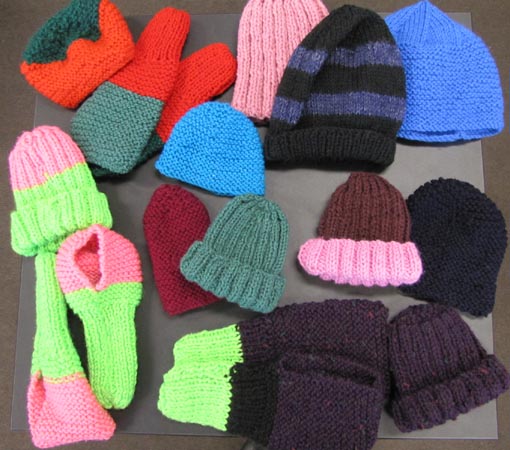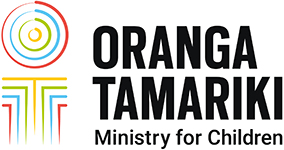Investing in your volunteers and the community
07 October 2013
Quilting, painting, music, carving, writing and dance classes in prisons are often run by volunteers from the community.
 Francine Benefield, Volunteer Co-ordinator at Spring Hill Corrections Facility in the Waikato, manages approximately 180 volunteers who visit the facility and work with the prisoners.
Francine Benefield, Volunteer Co-ordinator at Spring Hill Corrections Facility in the Waikato, manages approximately 180 volunteers who visit the facility and work with the prisoners.
Usually, the idea for an arts programme comes from staff working with the prisoners, she says. Sometimes, it comes from people in the community keen to share their expertise and enthusiasm with prisoners and support their rehabilitation.
Recently, Francine set up a pilot craft programme. This involved four block courses –two embroidery courses, followed by two knitting courses. Embroidery was offered twice a week over one-hour sessions while knitting was offered twice a week over two-hour sessions. The courses were offered to men in the Special Treatment Unit and Drug Treatment Unit over eight to ten weeks.
 “The men enjoyed the classes, which provided positive social interaction, and many of them shared memories of their grandmothers knitting,” Francine says. “They were keen to complete their work and were surprised with what they could achieve. They were proud of their accomplishments and wanted to share it with their whānau.
“The men enjoyed the classes, which provided positive social interaction, and many of them shared memories of their grandmothers knitting,” Francine says. “They were keen to complete their work and were surprised with what they could achieve. They were proud of their accomplishments and wanted to share it with their whānau.
“They also learned skills in numeracy and literacy, how to follow instructions and complete something tangible. There was some healthy male competition happening and some of the men completed three pieces of work.”
Francine Benefield responds to the following questions asked by Arts Access Aotearoa about setting up and managing prison art programmes involving volunteers from the community.
Q. What are some key steps in setting up an arts programme?
A. Once you’ve established the demand and potential benefits of a particular programme, I strongly recommend setting up a pilot programme. This involves putting together teams with at least three volunteers in each group. Someone in the group needs to have leadership skills to be the team leader.
 Be sure to get buy-in from everyone, including unit staff where the activity will be delivered, and also security. This will enhance the whole experience with the volunteers and avoid misunderstandings.
Be sure to get buy-in from everyone, including unit staff where the activity will be delivered, and also security. This will enhance the whole experience with the volunteers and avoid misunderstandings.
Other important elements include:
- establishing the kaupapa of the programme and being very clear about your expectations of the prisoners and the volunteers: no swearing, no gang talk and RESPECT
- briefing volunteers thoroughly before the classes begin
- providing ongoing support for the volunteers. This is about listening and responding to their concerns or questions; acknowledging their expertise; providing praise and also constructive feedback; and always ensuring they are aware of security criteria and behaviour management issues.
- being a good communicator and being flexible. Recognise that volunteers are individuals in the community who choose to offer their skills to support prisoners. They give up their time and so we need to ensure we have a high level of communication, particularly with last-minute changes.
Q. What are the benefits in running a pilot programme?
A. With any volunteer prison programme, we need to be sure it’s effective; has high attendance; and can be easily adapted to ensure it works for the volunteers, the prison and prisoners.
Piloting a programme is a useful way to assess what works and what doesn’t, and whether there is value in establishing a permanent programme.
The craft pilot was very successful with a good level of interest among the prisoners. Once I’ve done some more planning, I hope to set it up as a permanent programme.
Q. What is the role of the Volunteer Co-ordinator in a pilot programme?
A. Any volunteer programme needs to fit in with the volunteers and also work with the site.
It’s important not to overcommit a volunteer because it’s not sustainable. Spring Hill is in between Auckland and Hamilton so it can be difficult to attract volunteers because of the travel. It’s also expensive for a volunteer to come here. After six weeks of volunteering, they are eligible for petrol vouchers, which helps.
With the pilot craft programme, I deliberately rotated the embroidery and knitting so it would give the volunteers a break after the eight weeks.
Initially, I never leave volunteers on their own. I prefer to organise groups of volunteers, and then sit in on the sessions to help create models of best practice.
My role in running a pilot programme is to:
- brief and train the volunteers, ensuring their safety
- ensure the most appropriate timing of the programme
- maintain the attendance of the prisoners and arrange for their transportation to and from the programme
- support staff members throughout the prison so the pilot works for everybody
- take the time to develop positive relationships between volunteers, prisoners and staff
- evaluate the effectiveness of the pilot before deciding whether to continue.
Q. How do you brief and train your volunteers?
A. It’s all about clear communication, providing a thorough briefing for the volunteers, and responding to their questions and concerns.
There’s a lot for volunteers to be aware of and some of the things I talk to them about are:
- how to set up the room and create a safe zone
- how to assist the men and answer their questions (i.e. what can and cannot be discussed), at the same time avoiding distraction
- the importance of accounting for all equipment at the beginning and end of each session.
Q. What are the benefits in engaging volunteers?
A. The volunteers represent the community. For prisoners, it’s a chance to have a connection with the community they will one day return to.
When the volunteers’ experience is positive, they tell friends and workmates. This helps build networks and encourages more people to volunteer their skills.
Investing in your volunteers is investing in long-term community networks for your prison.




